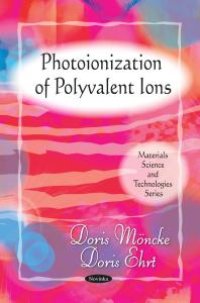
Ebook: Photoionization of Polyvalent Ions
Author: Doris Möncke, Doris Ehrt
- Tags: Glass -- Effect of radiation on., Glass -- Additives., Glass -- Defects., Photoionization., Polyvalent molecules.
- Series: Materials Science and Technologies
- Year: 2009
- Publisher: Nova Science Publishers
- City: Hauppauge, United States
- Edition: 1
- Language: English
- pdf
The effect of polyvalent dopants on photoinduced defect formation was studied in different glasses. Ionization of the glass matrix results in intrinsic defects, positively charged hole and negatively charged electron centers. Polyvalent dopants can be photooxidized or photoreduced. These extrinsic defects might replace selectively one or several intrinsic defects and/or cause an increase in the number of opposite charged defects. Photoionization can also result in unusual dopant valences otherwise not observed in glasses.The systematic comparison of different dopants and glass systems irradiated by excimer lasers helps to understand defect generation processes and might eventually help in the design of UV-resistant or UV-sensitive glasses. Defect formation occurs in the ppm range and was analyzed by optical and EPR spectroscopy. A series of polyvalent dopants such as typical trace impurities, glass or melt additives and typical dopants used for optical components like filter glasses, optical sensors, fluorophores or photochromes, were studied. Distinct melting conditions give rise to different valences of various dopants and as a consequence different photoinduced redox-reactions might be observed after irradiation. Some dopants are photooxidized while others are photoreduced Some defects recombine easily or transform into more stable defects while others are stable for months or years.
Download the book Photoionization of Polyvalent Ions for free or read online
Continue reading on any device:

Last viewed books
Related books
{related-news}
Comments (0)